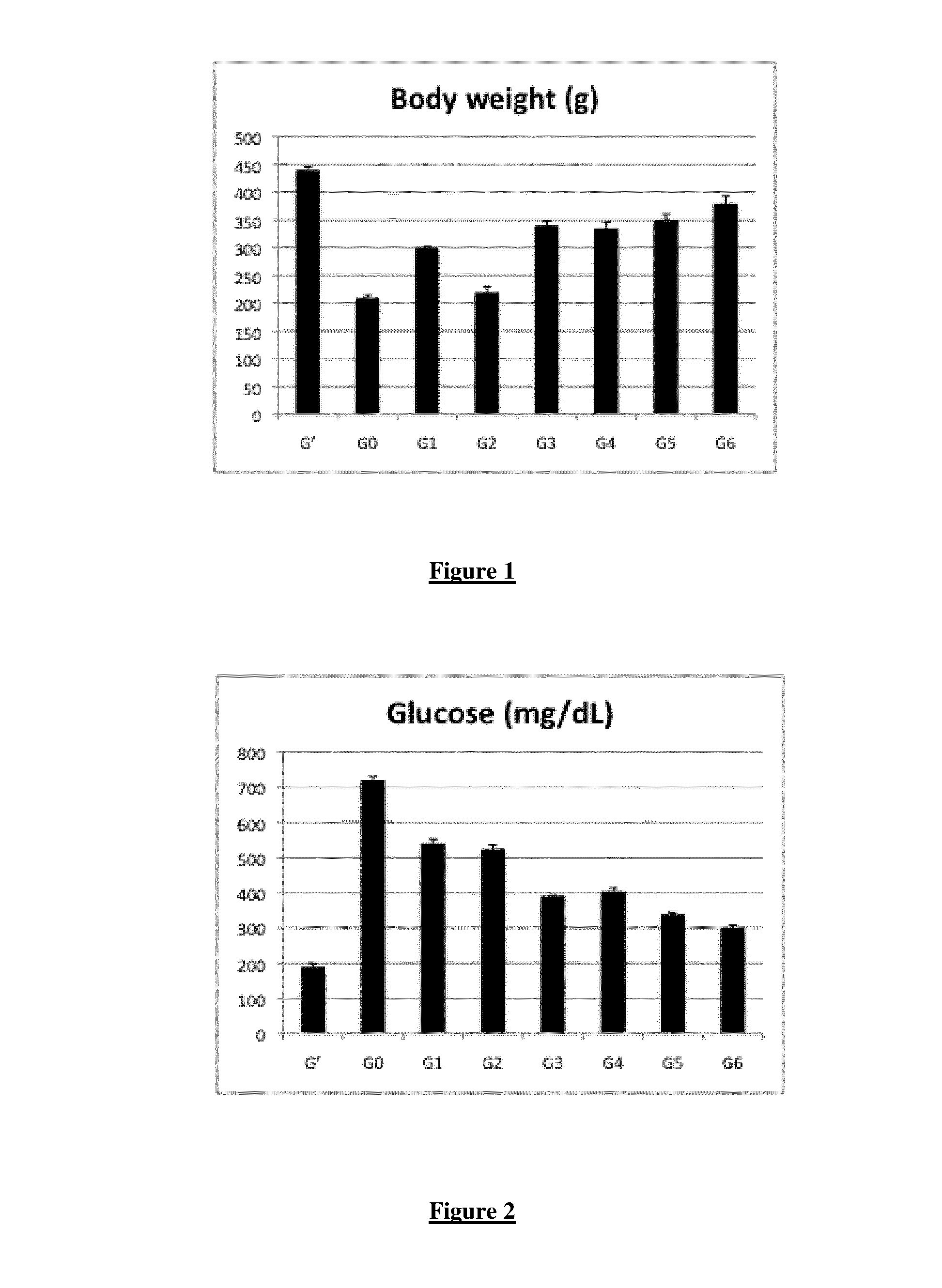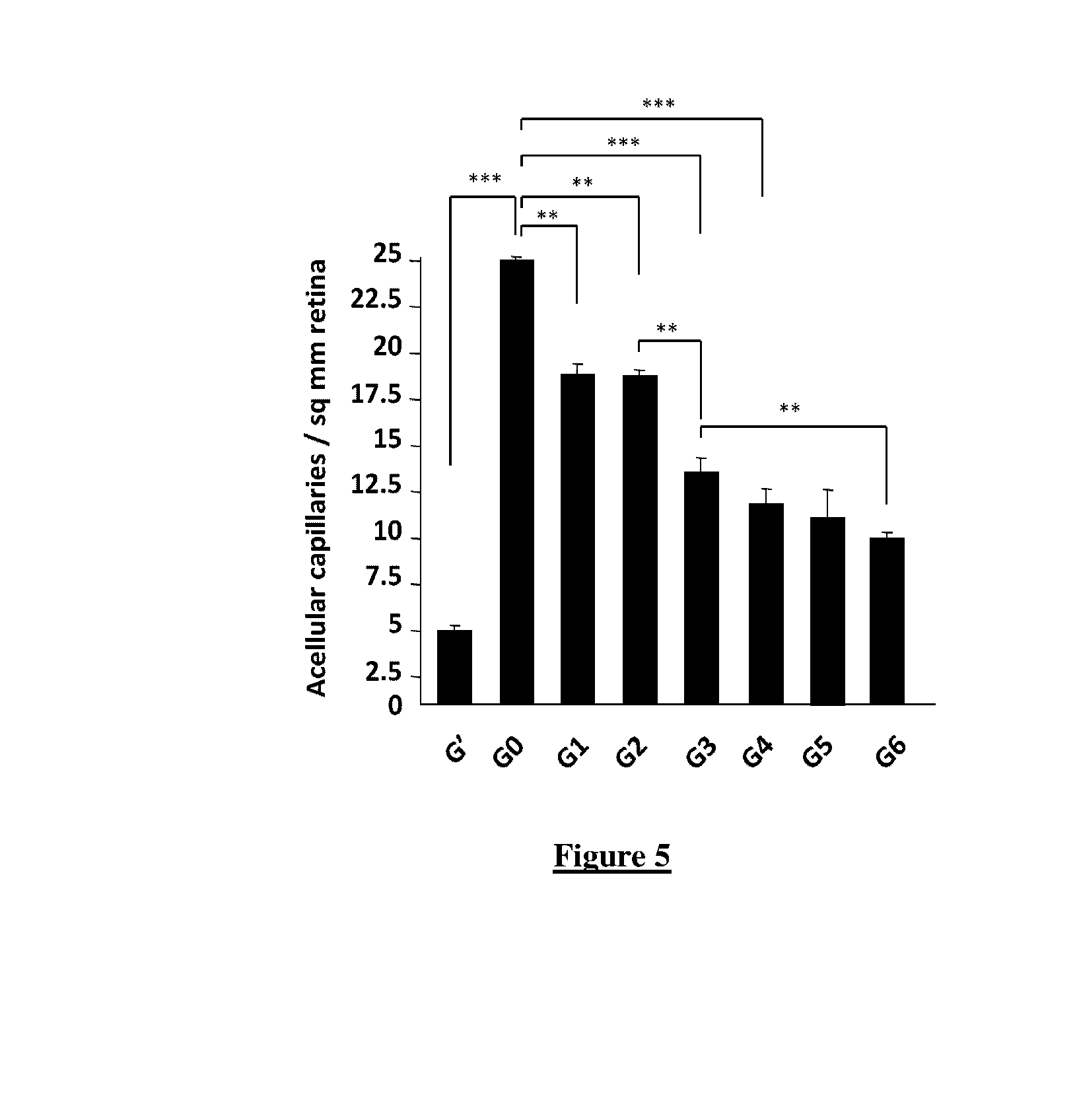Composition Comprising OPC and Omega-3 for Preventing and/or Inhibiting the Development of Diabetic Retinopathy
a technology of opc and omega-3, which is applied in the field of compositions for improving eye health, can solve the problems of affecting the development of diabetic retinopathy, and causing all sorts of complications, so as to prevent diabetes-related eye conditions in subjects and stabilize the development and/or the progression of diabetes-related eye conditions
- Summary
- Abstract
- Description
- Claims
- Application Information
AI Technical Summary
Benefits of technology
Problems solved by technology
Method used
Image
Examples
example 1
Composition of the Invention (Per Unitary Dosage)
[0151]
IngredientsQuantity (mg)Mg / unitary dosageActiveVitamin B11.1mg1.49mgagentsVitamin B61.4mg1.87mgPinus pinaster20mg20mgextract, rich in OPCFish oil containing100mg250mgDHA (Epax ® andQualitysilver ® labels)Magnesium93.75mg155.47mgChromium20μg100μgExcipientsSunflower lecithin,131mgsunflower oil,beeswax, glycerolmonostearate, silicaTOTAL560mgIngredientsMg / unitary dosageActiveVitamin B11.49mgagentsVitamin B61.88mgPinus pinaster20mgextract, rich in OPCFish oil containing250mgDHA (Epax ® andQualitysilver ® labels)Magnesium155mgChromium103μgExcipientsFish gelatin154mgRefined colza oil106mgGlycerol (E422)66mgGlycerol monostearate,25mgGlycerol distearateWater11.1mgTitanium dioxyde1.70mgSodium copper chlorophylline1.02mg(E141)793mg
example 2
Biological Example
Material and Methods
Experimental Animal Models: Streptozotocin-Induced Diabetic Rat Model:
[0152]Sprague-Dawley rats (Harlan), weighing 75-100 g, were assigned to one of eight subgroups, based on non-diabetic, untreated diabetic and treated diabetic groups as indicated here-under. Sprague-Dawley rats were housed in a constant environment (room temperature (22.0±1.5)° C., room humidity (55±5) %) with a normal light-dark cycle (12-hour light, 12-hour dark). Diabetes was induced by intraperitoneal streptozotocin injection (75 mg / kg STZ, 10 mM citrate buffer, pH 4.5). Non-diabetic control animals received an equivalent dose of vehicle (citrate buffer at pH 4.6).
Treatment of Animals
[0153]To analyse the effect of the composition of the invention, animals are fed as followed:
[0154]Group G′: Non-diabetic animals
[0155]Group G0: Diabetic animals (untreated)
[0156]Group G1: Diabetic animals fed with OPC
[0157]Group G2: Diabetic animals fed with DHA
[0158]Group G3: Diabetic animal...
PUM
| Property | Measurement | Unit |
|---|---|---|
| humidity | aaaaa | aaaaa |
| pH | aaaaa | aaaaa |
| pH | aaaaa | aaaaa |
Abstract
Description
Claims
Application Information
 Login to View More
Login to View More - R&D
- Intellectual Property
- Life Sciences
- Materials
- Tech Scout
- Unparalleled Data Quality
- Higher Quality Content
- 60% Fewer Hallucinations
Browse by: Latest US Patents, China's latest patents, Technical Efficacy Thesaurus, Application Domain, Technology Topic, Popular Technical Reports.
© 2025 PatSnap. All rights reserved.Legal|Privacy policy|Modern Slavery Act Transparency Statement|Sitemap|About US| Contact US: help@patsnap.com



